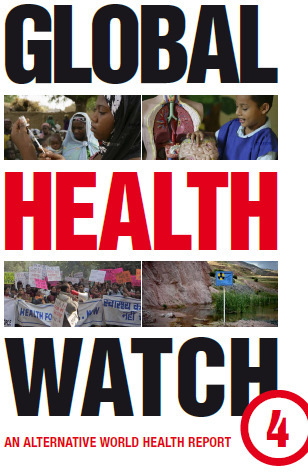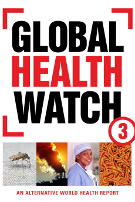Programs and priority setting: Special Meeting Feb 27-28, 2012
Purpose and agenda
The detailed history of this matter is summarised and referenced below.
The purpose of the meeting is articulated in the decision of the EB130 in Jan 2012 (EB130(6), page7). This basically decides to hold a MS meeting on Feb 27-8 to discuss EB130/5 Add.1, looking at priority setting, categorisation of WHO functions and evaluation. The EB Chairperson's summary of the Board's consideration of WHO Reform provides further detail regarding the purpose of this meeting.
The work on priority setting is one stream in the continuing WHO reform program. Other streams of work include governance reform, management reform, evaluation of WHO and relations with donors.
The EB decision regarding priority setting commissioned the Secretariat to produce the following papers (which were posted late Friday 17 Feb, 2012):
- Priority Setting: a review of the context, issues and options regarding priority setting;
- Mapping of Functions: mapping of the functions of the Organization (Article 2, WHO Constitution) in relation to the categories proposed in document EB130/5 Add.1, including crosscutting global needs and areas of work;
- Analysis of country cooperation strategies, identifying the needs of countries in a way that allows a determination of what WHO should focus its work on and where WHO is best placed to add value;
- Road map and timelines for the preparation of the Twelfth General Programme of Work and the Programme budget 2014–2015.
Links to these papers are posted on the DG's Reform Consultation Page. In addition a series of reference documents have been linked from the DG's Reform Consultation page:
- Eleventh General Programme of Work, 2006–2015;
- Medium-term Strategic Plan 2008–2013 (amended);
- Documents EB130/5 Add.1 and Add.2;
- Document EBSS/2/2 and decision EBSS2(1);
- Document EB118/7 on strategic resource allocation;
- World Health Statistics 2011 (which provides information on disease burden).
Further useful papers and sites are:
- Summary information on financial and human resources (EB130/5 Add.2)
- Chairman's summary of the EB discussion
- MMI/PHM intervention in the EB130 discussion
- PHM comment on Reforms for a Healthier Future (Oct 2011), includes note on prioritisation
- PHM comment on priority setting after SSEB
- PHM, TWN, IBFAN, GIFA, MMI Commentary on priority setting
- See also DG's WHO Reform site
While the discussion of priority setting is part of the WHO Reform process it appears to be increasingly focused on the development of the next Global Program of Work and Program Budget. It is expected that the recommendations arising from the 27-28 Feb meeting (to the WHA and EB) will focus on the next GPW and PB.
Chairperson's Report of Feb meeting on Priority Setting
The Chairperson's report of the 'consensus' achieved at the Feb meeting was tabled at the WHA in May as WHA65/40. It was quite controversial at the WHA because chair summaries have not been part of WHO's procedures in the past and there are no agreed guidelines for achieving consensus around such summary reports.
PHM Comment
Some thought starters:
- How best to accommodate the power of the donors to determine what they will fund, in any systematic priority setting process? WHO needs to address the over-riding role of donors in determining resource allocation and the importance of making the donors more accountable in undertaking to fund particular functions and countries. We need to scale up our advocacy for reducing the role of earmarked EBFs and increasing assessed contributions.
- What happened to managerial responsibility? The absence from the Secretariat paper (130/5 Add.1) of any reference to the management hierarchy/ies of the organisation and the role of this/these hierarchy/ies in the allocation of resources is striking. Either do away with hierarchies or make them work. WHO needs to strengthen the accountability of the management hierarchy as part of addressing the challenge of ‘prioritisation’. Either abolish the regions or work with them; you can’t ignore them. Looking forward to clarification.
- What is the operational significance of the typology of countries x categories of functions matrix? If resource allocation is to be removed from managerial responsibility (point 2 above) then presumably the DG plans on some kind of centrally determined allocation to all of the cells formed by the typology versus categorisation matrix. Seems a bit bizarre. Hopefully the shortly to be released papers will clarify.
- Does it make sense that WHO should be judged on the basis of whether it causes population health improvement? The complete absence from the paper of any reference to program logic in relation to evaluation of WHO effectiveness is surprising, to put it mildly. Given the myriad of different and unpredictable factors which shape population health improvement the idea that WHO should be judged on whether population health improves is on par with the idea that national health systems should be ranked on population health status. Some organisations are slow learners.
Background
Since the mid 1980s WHO has been progressively hobbled by its increasing dependence on extrabudgetary funding. During this time the proportion of WHO's expenditure budget which is provided by EBF has grown to 82%, largely earmarked.
The increasing dependence on EBFs has had a number of negative effects including:
- malalignment of WHO work against the priorities set by the member states;
- loss of WHO independence due to dependence on donors and partnerships;
- fragmentation of the Secretariat with clusters raising their own funds, often in competition with each other; and
- use of assessed contributions to cover costs incurred as a consequence of donor funded programs, eg having to pay redundancy for staff who were originally funded by donor funds.
While WHO's disabilities are in large part a consequence of the refusal of the member states to increase assessed contributions and the insistence of some of the donor states to ear-mark their donations, many of the rich MS have given the inefficiencies of the organisation as the reason for not increasing assessed contributions or untying their donations.
The call for WHO reform has been supported by MS who are keen to see a more independent and vigorous WHO as well as those who are happy to continue to control the organisation through earmarked funding.
The crisis was discussed in an informal consultation organised by the DG in January 2010 (report of consultation) and again at the EB128 in Jan 2011. At this stage the focus of the discussion was on the financing of WHO as was reflected in the DG's paper for the EB, EB128/21, 'The future of financing of WHO'. A number of possible directions were discussed:
- Increased assessed contributions (very little member state support);
- Action to remedy the distortions in management and accountability which are associated with tied funds, eg a single point coordination of external funds raising (unlikely to solve the problems arising from tied funds);
- Encouragement for non tied donations (might lead to some reversal of the 80/20 gap);
- Encouragement to only accept tied donations which are tied to member state priorities (tied donations are the problem which ever way);
- Greater transparency and accountability with respect to donor funds, including a clear code of conduct regarding voluntary contributions and donations, so as to prevent conflicts of interest between donor priorities and the member state driven agenda of the WHO (unlikely to make much difference?).
Following EB128 (Jan 2011) the DG prepared a new edition of the paper 'The future of financing of WHO'. (A64/4) for discussion at the WHA in May 2011. See WHO Watch report of the debate at WHA64, Item 11 'The future of financing of WHO'.
Ways of proceeding were discussed by the EB (EB129) immediately following the May 2011 WHA. See WHO Watch report of EB129 under Outcomes of WHA 64: Concerning WHO Reform. See also Official Records for the official semi verbatim reports of these discussions.
Following the discussion at the WHA64 and EB129 in May 2011 the focus was broadened to WHO Reform and a formal strategy for WHO Reform was adopted. See WHO Reform for a healthy future on the DG's website.
A decision was taken to hold a special session of the EB in November 2011 to focus solely on WHO Reform. The DG was commissioned to prepare a number of papers for this SSEB. Three papers were prepared and released in July dealing with:
These were subject to virtual consultation from July to September and were discussed at the regional committee meetings. In October 2011 the DG circulated a new version of WHO Reforms for a Healthy Future (15 October) building on and incorporating comment on the three earlier discussion papers and including a new Road Map for organisational review and reform for discussion at the Special Session of the EB. See PHM comment (Octobber 15) on 'Reforms for a healthy future'.
Following the SSEB the Secretariat prepared 9 further papers for consideration at the EB130 in Jan 2012. See http://www.ghwatch.org/who-watch/eb130/whoreform for links to the 9 papers.
The first of these papers dealt with Programmes and Priority Setting (EB130/5 Add.1). See WHO Watch report of discussion WHO Reform at EB130. See the MMI/PHM intervention in this discussion.
Following EB130 (Jan 12) the DG posted a summary of the discussions to date and the arrangements for the MS discussion of Programmes and Priority-setting scheduled for 27-28 Feb. This includes the Chairman's Summary of the EB discussion and the Decisions of the EB (see EB130(6) on page 7).
| Attachment | Size |
|---|---|
| PHM_TWN_IBFAN-GIFA_MMI.pdf | 63.61 KB |




